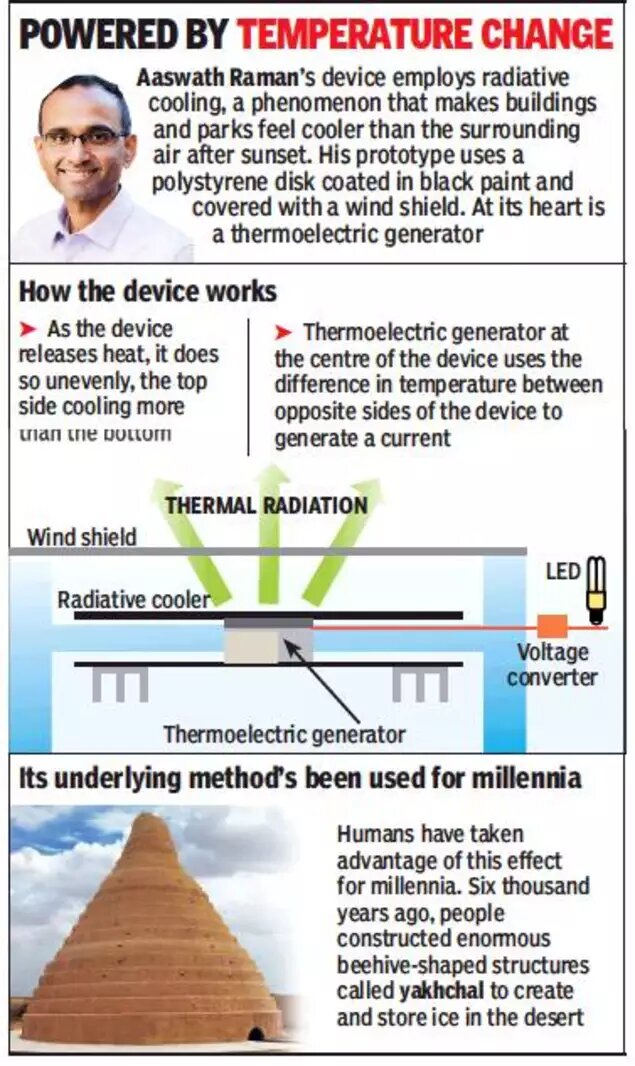Science & Technology
Radiative Cooling & Electricity Generation
- 16 Sep 2019
- 3 min read
Recently, a scientist of Indian-origin has demonstrated a new way to generate electricity at night, without any active heat input.
- The prototype device employs radiative cooling, in which a sky-facing surface passes its heat to the atmosphere as thermal radiation, losing some heat to space and reaching a cooler temperature than the surrounding air.
- This phenomenon explains how frost forms on the grass during above-freezing nights, and the same principle can be used to generate electricity, harnessing temperature differences to produce renewable electricity at night, when lighting demand peaks.
- According to the laws of thermodynamics, everything on Earth emits heat.
- At night, when one side of Earth turns away from the sun, its buildings & streets cool off.
- If no clouds are present to trap warmth, objects on the Earth can lose so much heat that they reach a lower temperature than the air surrounding them.
- It can be noted that humans have taken advantage of this effect for millenniums.
- Six thousand years ago, people in Iran and Afghanistan constructed enormous beehive-shaped structures called Yakhchal, which used this passive cooling effect to create and store ice in the desert.
Working Principle
- This device releases the heat unevenly in a manner that the top side cooling is more than the bottom side cooling. It then converts the difference in heat into electricity.
- At its heart is the gadget called a thermoelectric generator, which uses the difference in temperature between opposite sides of the device to generate a current.
- When the device was connected to a voltage converter, it was able to power a white LED.
Potential Application
- This could be a broadly enabling approach to power generation suitable for remote locations, and anywhere where power generation at night is needed.
- While solar cells are an efficient source of renewable energy during the day, there is currently no similar renewable approach to generating power at night.
Way Forward
- Although the amount of electricity it generates per unit area remains relatively small, limiting its widespread applications for now, but the researchers predict it can be made twenty times more powerful with improved engineering -- such as by suppressing heat gain in the radiative cooling component to increase heat-exchange efficiency.
- If this device could produce any amount of electricity at night, it would be valuable as after the sun sets, solar cells don’t work and winds often die down. This innovation is vital in complementing other renewable sources of energy.







